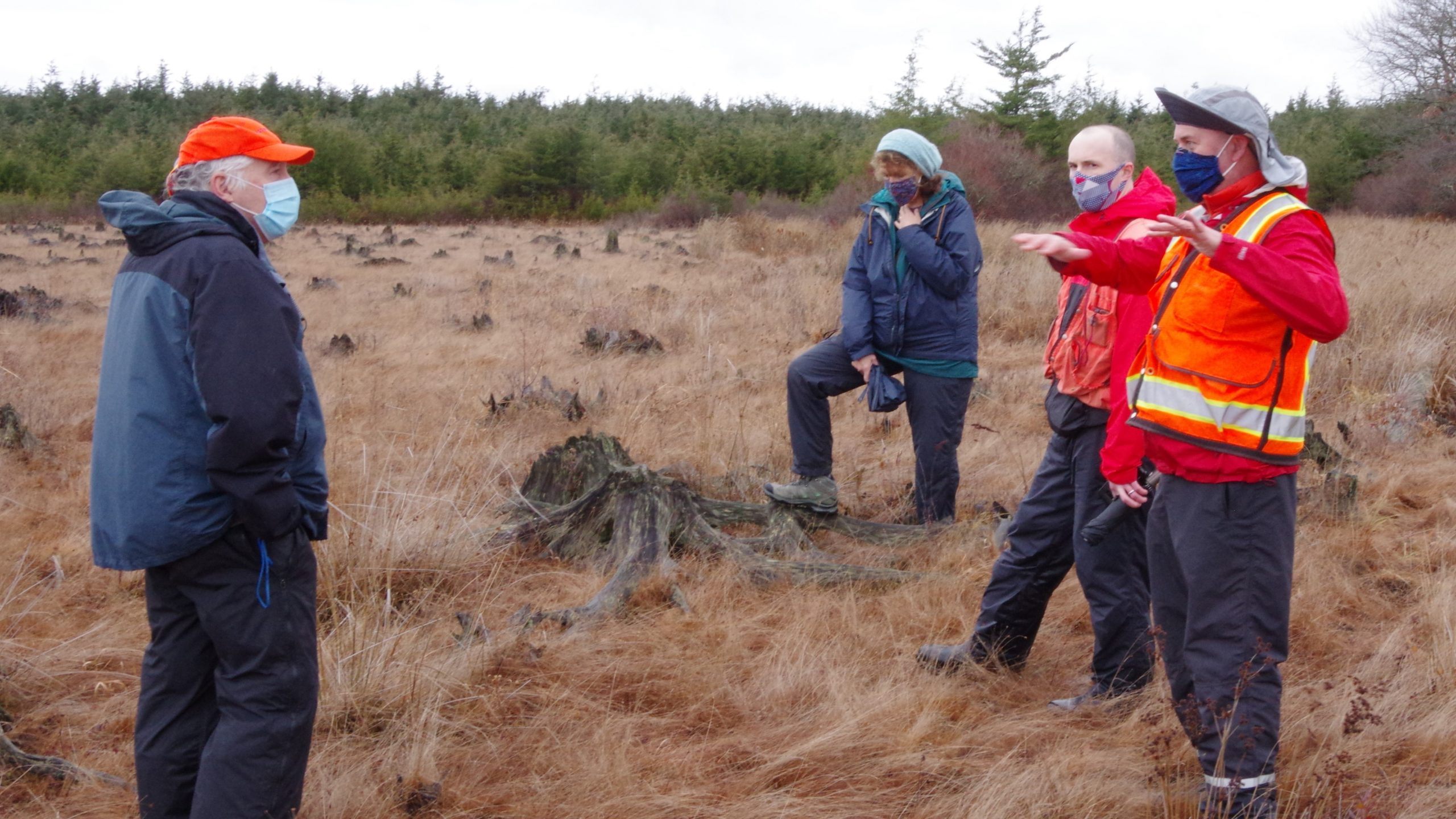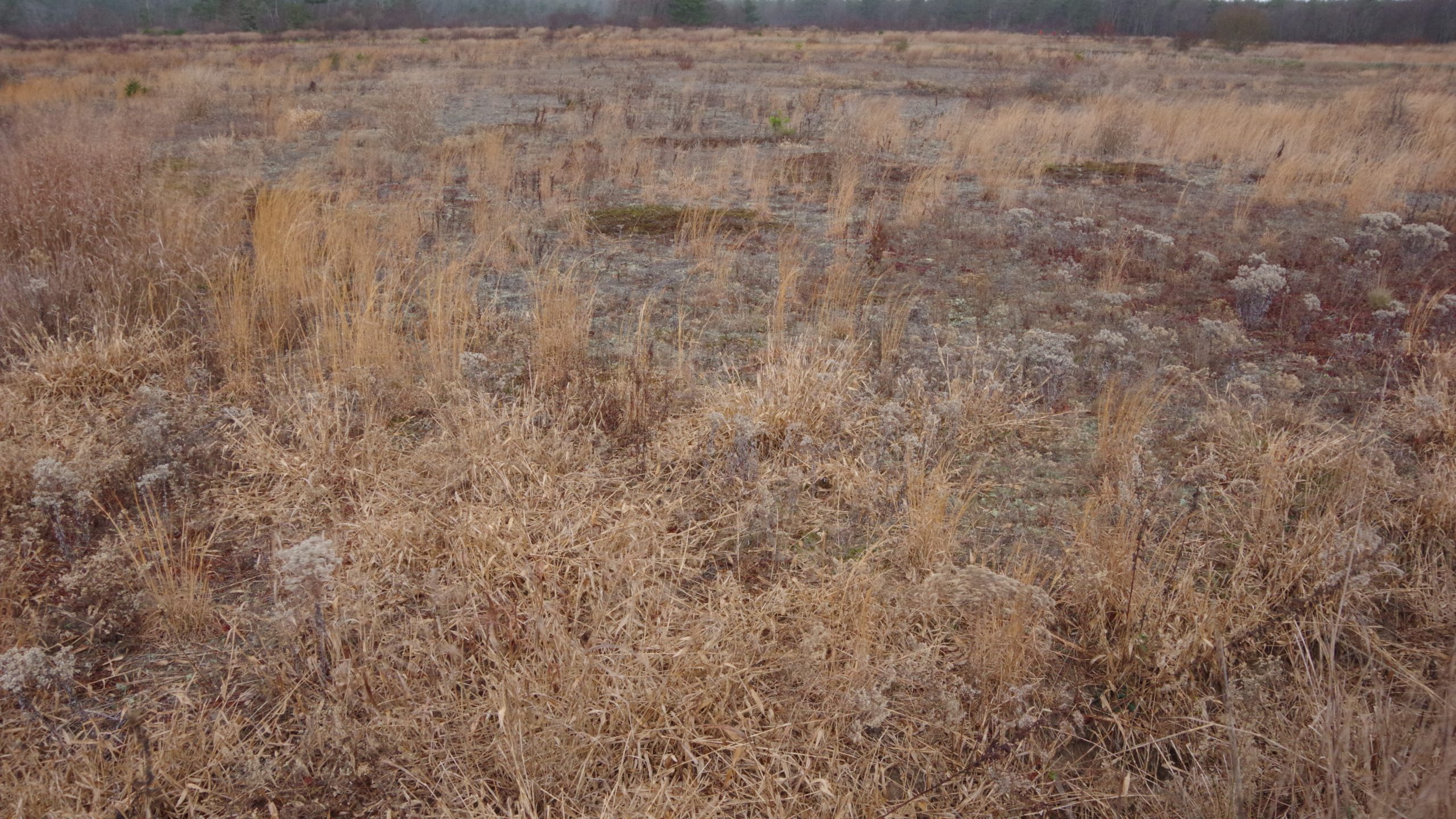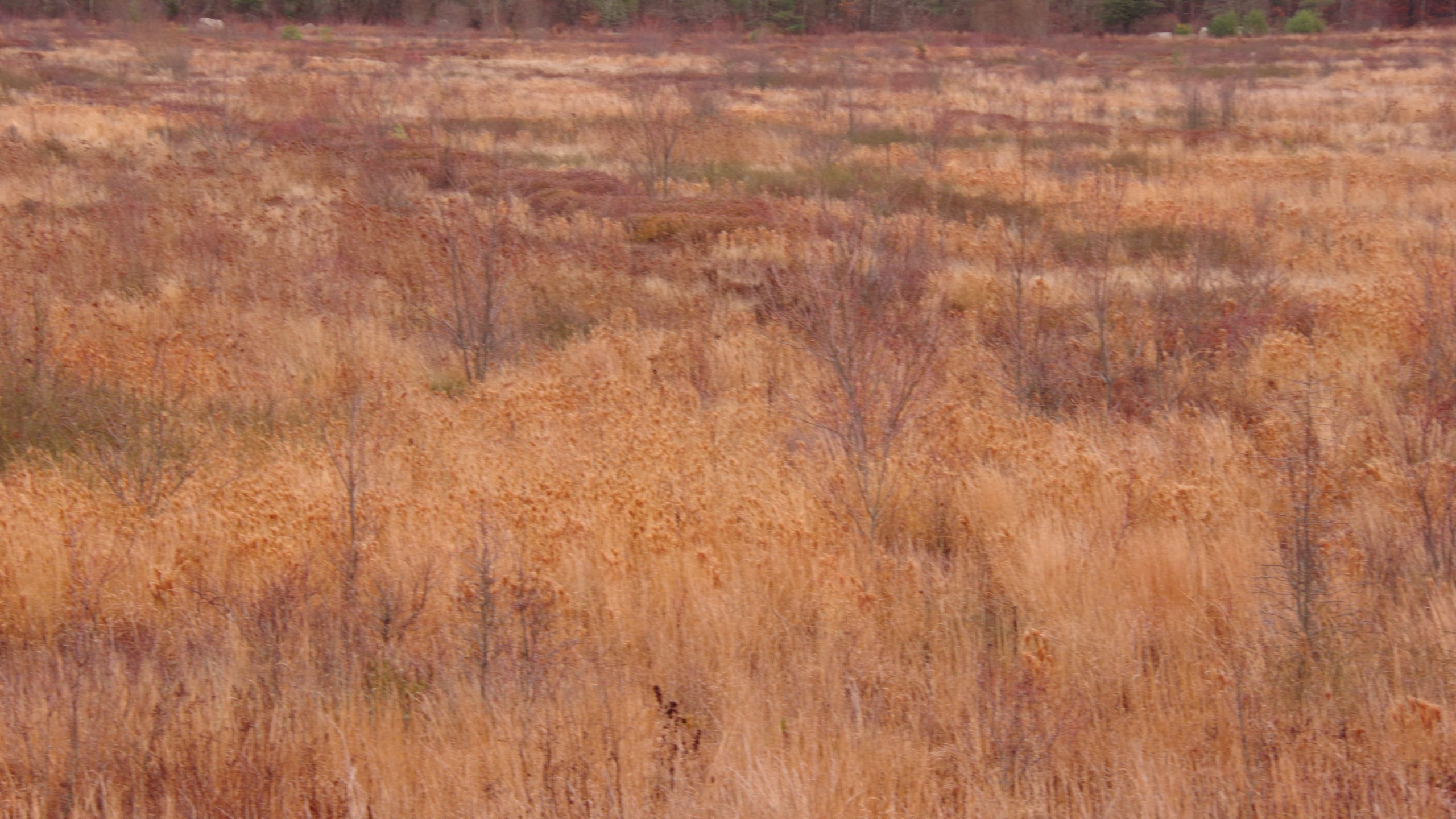Sandplain Grassland Network (SGN) is exploring the potential to incorporate restoration of sandplain grasslands into future cranberry bog restoration projects being planned by the Massachusetts Division of Ecological Restoration (DER) and various landowners.

From Left to Right: Bob Wernerehl, Karen Beattie, Eric Ford, and Alex Hackman. Photo Credit: Chris Neill
On Monday, November 23, SGN committee members met with associates from DER to tour three sites and discuss ways to improve habitat. The group included Chris Neill (Woodwell Climate Research Center), Bob Wernerehl (MassWildlife), Kelly Omand (Nantucket Conservation Foundation), Karen Beattie (Nantucket Conservation Foundation), and Alex Hackman and Eric Ford (DER). The group visited three sites existing in Mattapoisett, Rochester and Freetown, MA.

Upland area within former cranberry bogs with a diversity of grassland species. Photo Credit: Chris Neill
There is potential for grassland restoration both on some of the drier portions of former cranberry bog beds, and in the open upland areas around some large bog complexes. Cranberry bogs occur typically in regions of sandy soils that could support drought-tolerant grasslands. Also, because cranberry farmers add sand to bog platforms year after year, some bog platforms—under which groundwater levels are too deep to easily convert them back to wetlands—might be good sites for grassland creation.

Upland area within former cranberry bogs with a diversity of grassland species. Photo Credit: Chris Neill
Sandplain grasslands are in imperiled ecosystem home to a high number of rare and uncommon species throughout the region. Most cranberry growing beds and surrounding uplands around both active and retired cranberry farms have high proportions of native plants, many of which, such as little bluestem (Schizachyrium scoparium) and grass-leaved goldentop (Euthamia graminifolia), typically occur in sandplain grasslands.

